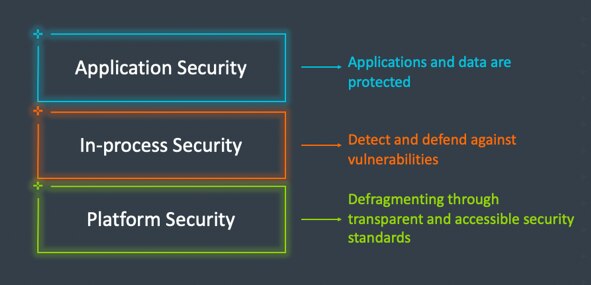A Total Compute Approach to Delivering Digital Immersion Under a Common Architecture

By Ian Smythe, vice president of marketing, Client Line of Business
News Highlights:
- Arm Total Compute represents a new approach to IP design focusing on use-case driven optimized system solutions
- Evolving capabilities of Arm CPU IP by adding new ML instructions such as Matrix Multiply (MatMul) to boost performance
- Arm and Unity Technologies extend strategic partnership to further push performance of Arm technology in the Unity real-time 3D development platform
During my Arm TechCon 2019 keynote, I talked about the multiple transformations our industry is facing, from challenges in process scaling and data privacy, to a very fragmented ecosystem. While 5G will create a world of opportunity, we still need to deliver the power, performance, and efficiency for the next generation of immersive experiences.
Along with 5G, the acceleration of AI, xR, and IoT are changing compute requirements. The performance we need for digital immersion is going to have to push beyond what we have today, towards the world of Total Compute. This requires a very different approach to how we design our IP, with a deep focus on optimizing performance, security, and developer access.
Make no mistake, it won’t be more of the same, but a paradigm shift in thinking. We are moving from a single product evolution focus to a use-case and experience-driven system solution by optimizing within and across IP, software, and tools to provide a secure foundation and deliver the performance required for the complex compute challenges of tomorrow’s workloads.
Pushing ML performance to new levels
Since we announced the Cortex-A73, we’ve gradually increased machine learning (ML) performance generation-over-generation and today, we’re working to significantly broaden our CPU coverage for ML. In order to enable this new digital world, we need to push compute to a higher level, which is why we’ve added Matrix Multiply (MatMul) to our next-generation Cortex CPU, “Matterhorn”, effectively doubling ML performance over previous generations.
Beyond the CPU, we need to focus and apply the Total Compute approach to each compute element and its infrastructure within the system. Whether it’s an Arm CPU, GPU, NPU, interconnect, or system IP, it must be optimized as an integrated solution. And this relies on the software and tools to make it happen, including Arm NN, the Arm Compute Library, the open source community, and open standards, all built on a secure foundation.
Securing the digital world
Looking at security and why it matters is very important for digital immersion. We are increasingly relying on our mobile phone as the hub for all our personal information, and you can’t have privacy without security. Security within Total Compute is based on three layers:

We are already starting to roll out innovative security features like Memory Tagging Extension (MTE), as part of Total Compute, to meet the various needs of our customers. In fact, Google recently announced their plans to partner with us to design MTE for Android devices. These features, combined with Platform Security Architecture (PSA), will help to standardize and defragment security across the entire ecosystem.
Enabling developers under a common architecture
Did you know there are 23 million software developers in the world focused on building the best experience?[1] They are hungry for a standard set of software and driver interfaces to build their platforms, and while we are some way from that today, Arm is investing in these developers to enable this digitally immersive future. Our aim is to deliver Total Compute as the platform of choice for all developers, unleashing greater performance from silicon and virtual prototypes.
As part of Arm’s commitment to developer enablement, during my keynote I also announced an expanded partnership with Unity Technologies, a strategic partner who shares our mission of enabling creators. Arm and Unity will work together to further optimize performance on Arm-based SoCs, CPUs, and GPUs allowing developers to spend more time creating new, immersive content. With 70% of VR content development today happening in Unity, this is a massive win for the entire ecosystem and key to our future success.
“We’re proud to partner with Arm to ensure the world’s largest group of creators – Unity developers – have tools that are uniquely optimized for the billion-plus Arm powered devices.” -Ralph Hauwert, vice president of Platforms, Unity Technologies
Total Compute: The platform of choice
Our industry is reaching a pivotal crossroads, specifically as we try to solve a significant integration challenge: individual IP and fragmented solutions are hard to optimize. If we are to take advantage of the enormous future technology opportunities, we need to put use cases, consumer experiences, and the needs of the ecosystem at the heart of our IP design.
There will be a range of elements involved in any Total Compute solution, whether it’s for a VR headset or a wearable, a smartphone or a DTV. Our aim is to provide the foundation of the future compute platform, and with a Total Compute approach, we will simplify security, improve performance and efficiency, and give developers more access to performance throughout the Arm ecosystem, ultimately delivering true digital immersion.
[1] Source: Evans Data Corporation, 2018
Any re-use permitted for informational and non-commercial or personal use only.












